Learn about 3D printer metal filament before checking out our top picks for the best brands and products available right now.
Accurately 3D printing an object in pure metal is a fascinating concept. Sadly, it’s only really possible with a proper metal 3D printer, which is an incredibly expensive prospect. Basically, you’re looking at a minimum investment of $50,000 – more often than not in the neighborhood of $100,000 and up. Furthermore, you’ll need special materials to print with and a very expensive furnace to “finalize” prints.
For most of us, the more practical way to benefit from metal 3D printing will be to use a service like FacFox. Requesting a particular finish is easy and you’re sure to get a professional quality model delivered right to your door.
All of that said, if you’re looking for something similar to – but not completely – metal, there’s a third option: metal filaments.
What Are Metal Filaments?

Metal 3D printing filament is basically normal filament with some amount of metal added. That means it can be used with a regular desktop FDM printer (but perhaps with a special nozzle). Metal filaments come in a variety of materials, ranging from copper and bronze to iron and stainless steel.
Metal filament prints can feel more solid and look similar to cast metal. Post-processing metal prints, for example polishing or “rusting”, can also give a variety of effects.
Words of Warning
It’s important to note that, if you want a filament with actual metal in it, you’ll need to look for the word “composite” or “metal fill”. Beware of filaments with only “metal” in the name, as this might simply indicate a metallic color or shine. For example, Amolen’s Multicolor Silk Metal Rainbow is meant to exhibit a “metallic color.”
Also know that, though a manufacturer may list the percentage of metal that’s in its filament, this could be by either volume or weight, making comparing materials difficult; the latter tends to look more impressive, as metal is much denser than plastic. Illustrating this is Formfutura’s Classic Copper filament, which is claimed to have “80% copper filling.” Given the stated density of 3 g/cm3 (lying between PLA’s 1.25 g/cm3 and copper’s 8.96 g/cm3), this is clearly a by-weight percentage, with the by-volume percentage lying closer to 30%.
All things considered, there are a variety of companies providing a range of 3D printer metal filaments with different types and amounts of embedded metal. We’ve organized the majority of our list by percentage of metal by volume, with the least amount appearing first. Among them are two special options, where sintering prints can yield nearly 100% metal parts. Those whose percentages we couldn’t confirm appear at the bottom.
Before we get to the best filaments, though, let’s quickly go over metal filament pricing as well as a few tips.
Costs
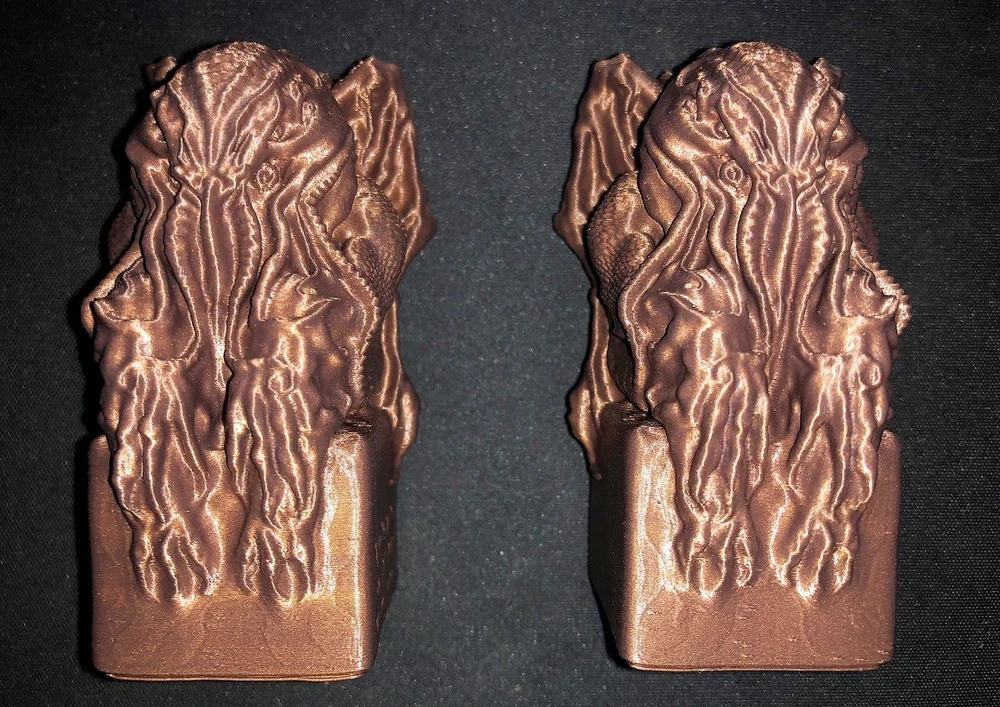
As mentioned before, the cost difference between using metal filament and using an industrial metal printer is astronomical. However, compared to standard filaments, metal filament can cost at least twice as much depending on the amount and type of fill. It’s still certainly within the realm of consumer printing, but pricing can be deceiving, so be sure to pay attention to the amount you’re getting.
For starters, standard PLA and ABS filament usually comes in 1-kg spools. With the corresponding prices in mind, metal filament can sometimes look like a deal, but often prices are for only 500 grams or less. If you want to try different materials, you can look for low-cost “samples” (such as 100-gram coils). That way, you can try something out before committing to a whole roll.
On a similar note, any metal will add to the density of its filament. This means that, compared to PLA or ABS, a spool of metal filament may be shorter than you’d expect for the same weight. If possible, always check length specifications when purchasing.
Printing Tips

Before you start printing with metal filament, it’s important to consider the following:
- Upgrading your nozzle to stainless steel, nickel-plated brass (better heat transfer), or another hardened alloy may be necessary, since brass nozzles wear out much faster from metal abrasion.
- Filament should be kept dry and in a cool place to reduce moisture exposure. With metal fill, especially at higher percentages, the filament can be a little more brittle and should be handled with care.
- Print settings can be a challenge. The more metal in the filament, the more difficult it may be to find the correct settings for a good print. Considerations must be made for adjusting temperature, retraction, and first-layer thickness.
Protopasta (10-15%)
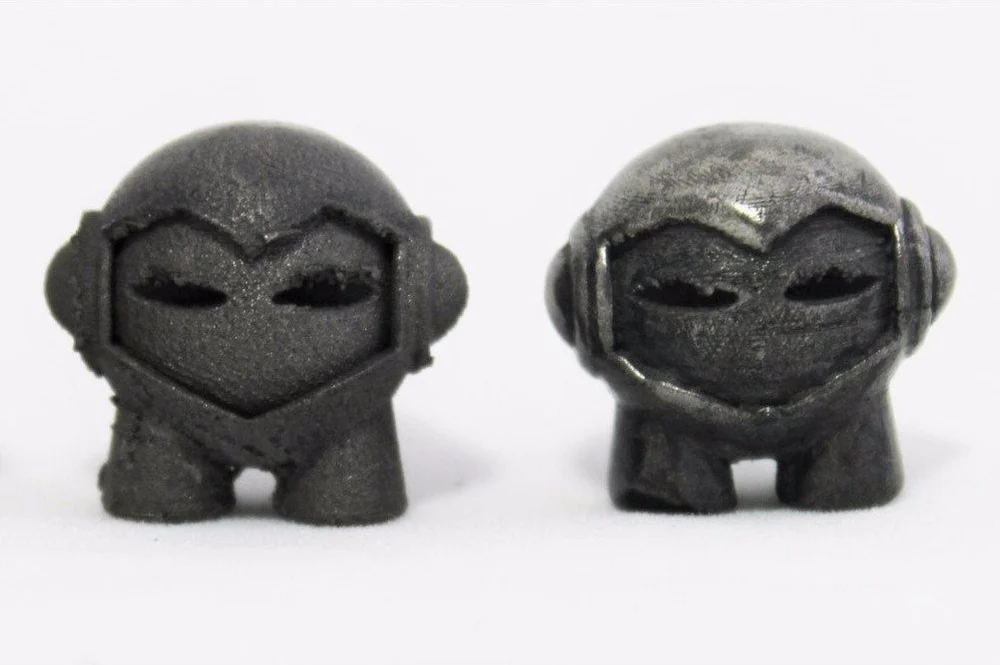
US-based Protoplant is one of the early players in the metal 3D printer filament market. Their filament brand Protopasta includes the following five metal 3D printing filaments: copper-, brass-, and bronze-filled HTPLA (heat-treatable PLA) as well as steel- and iron-filled composite PLA.
For the HTPLA filaments, treating printed objects with heat (110 °C for 10 minutes) makes them significantly stronger and harder. You can polish prints from the iron-filled filament to expose the metal, then apply water- or vinegar-based washes to cause different aging effects.
Given that all five materials primarily consist of PLA and have densities ranging from 1.85 to 2.3 g/cm3, the percent metal by volume are close to 10 to 15%.
Although Protopasta appears at the top of many consumer lists and is likely to provide good quality prints, there are a couple of drawbacks to their metal blends. First, the spools are cardboard instead of plastic. While environmentally friendly, they may not roll as smoothly. And second, the filament is brittle and has to be handled with care.
- Price: $70-$100 for 1 kg
- Spool sizes: 50 g, 125 g, 500 g, 2 kg
- Nozzle temperature: 185-230 °C
- Bed temperature: Up to 60 °C
Formfutura (~30%)

Available in “Classic Copper” and “Ancient Bronze”, the Netherlands-headquartered Formfutura manufactures and retails metal 3D filaments that are claimed to be around three times as heavy as PLA.
Both materials are based in PLA and have densities close to 3.5 g/cm3. Therefore, the percent metal by volume lies around 30% for each.
- Price: ~$72 for 1 kg
- Spool sizes: 50 g, 750 g, 1.5 kg
- Nozzle temperature: 215-235 °C
- Bed temperature: Up to 60 °C
ColorFabb (30-35%)

Founded in 2012 in the Netherlands, ColorFabb has been a pioneer in manufacturing metal 3D printer filaments. It launched its first 3D printing filaments commercially in 2013, and in 2014, the company debuted BronzeFill, which had actual bronze powder in it – a technological breakthrough at the time.
As of 2020, ColorFabb has a widely acclaimed portfolio of metal-infused PLA filaments that have metal powder mixed in, including BronzeFill, CopperFill, and SteelFill. Based on the base materials and densities provided by the company, these filaments include between 30 and 35% metal by volume.
All of these filaments can be used with almost any desktop 3D printer and the printed model has the look and feel of a real metal object. With a laser-sintered texture and complexion plus a matte finish, prints can be further polished, sanded, and filed to get a more refined final look.
- Price: ~$75 for 1 kg
- Spool sizes: 750 g, 1,500 g
- Nozzle temperature: 190-220 °C
- Bed temperature: 55 °C
BASF Ultrafuse 316L (⁓100%)

BASF’s Ultrafuse 316L filament along with the next product represent unique entries in this list. Though impressive, they aren’t exactly equal to the options discussed above, neither in terms of cost nor effort.
While Ultrafuse 316L filament is a metal-polymer composite containing a high percentage of 316L stainless steel, the final product is almost 100% metal.
How is this possible? Well, for industrial-grade parts that require high strength, prints can be sent off for additional processing after you’ve printed them at home on a normal FDM 3D printer. Through a debinding and sintering process, the polymer is removed from the part and the metal is welded together, becoming more dense and compact.
This filament is only available in stainless steel but comes in both 1.75- and 2.85-mm widths. Given the high initial metal percentage, you may experience bed adhesion issues and the sintering process will likely shrink for your finished part. MatterHackers suggests a glass print bed with Dimafix adhesive and scaling up your parts by 120% to resolve these issues.
- Price: ~$155 for 1 kg
- Spool size: 3 kg
- Nozzle temperature: 230-250 °C
- Bed temperature: 100-120 °C
The Virtual Foundry (~100%)
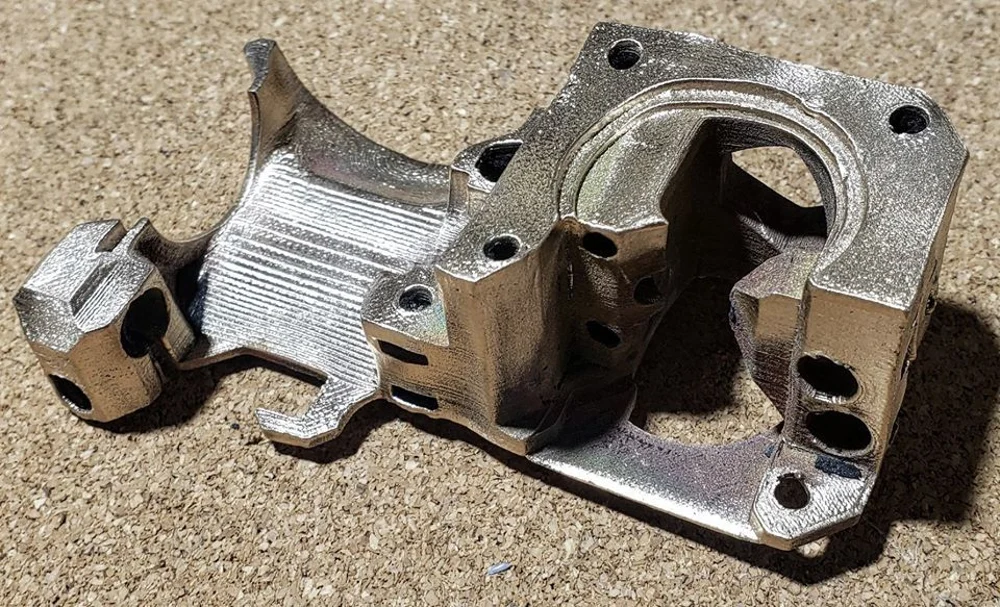
The Virtual Foundry’s Filament is a product similar to BASF’s Ultrafuse. That is, after printing parts, you’ll need to have them sintered to remove all of the non-metal material.
Along with some off-the-shelf metal filaments, the company has so far created 30 different kinds of filaments on the request of the industry. In addition to metal filaments in standard diameters, the company also sells pellets of the same material. Metal 3D printing materials include aluminum 6061, bronze, copper, high carbon iron, and stainless steel 316L.
- Price: $140-$500 for 1 kg
- Spool sizes: 250 g, 500 g, 1 kg
- Nozzle temperature: 205-235 °C
- Bed temperature: 40-50 °C
OTHER OPTIONS
Gizmo Dorks
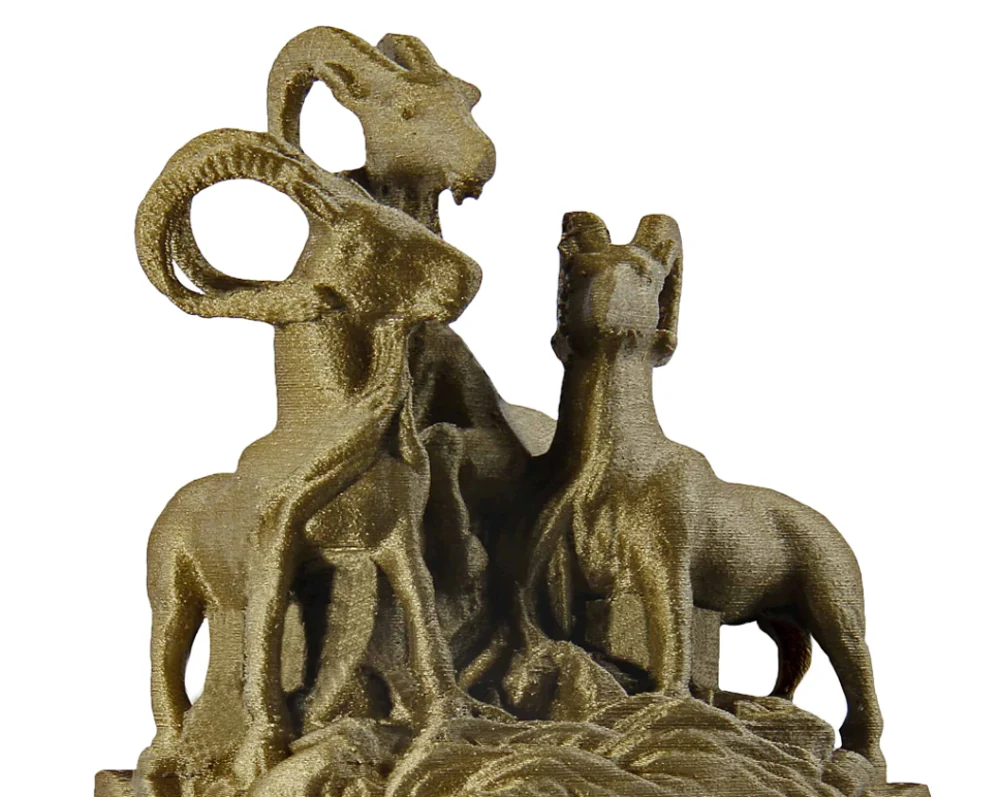
If you’re looking for a reliable filament brand, Gizmo Dorks is a good bet because of its range of products, quality, and popularity. The company offers two metal-filled PLA filaments: copper and bronze. The company claims that the percent metal in these filaments is 5%, but without any additional information, it’s unclear as to whether this value refers to volume or weight.
Still, they produce nice-looking models and users seem happy with results. And that’s not surprising; with its low metal percentage, this filament should be a relatively easy filament to work with, and it’s also competitively priced.
- Price: ~$25 for 1 kg
- Spool size: 1 kg
- Nozzle temperature: 190-225 °C
- Bed temperature: Up to 70 °C
BuMat

BuMat is an American manufacturer with a diverse portfolio of filaments, including flexibles, high-speed PLA, and metal-filled. According to BuMat, their metal-filled filaments are PLA-based and contain between 10 and 12% metal, but it’s uncertain whether this refers to volume or weight.
The company offers three options: aluminum, bronze, or copper. The base PLA material also sticks to the color of the infused metal, so your prints will look even more metallic.
- Price: ~$35 for 1 kg
- Spool size: 1 kg
- Nozzle temperature: 180-220 °C
- Bed temperature: Not stated
SainSmart
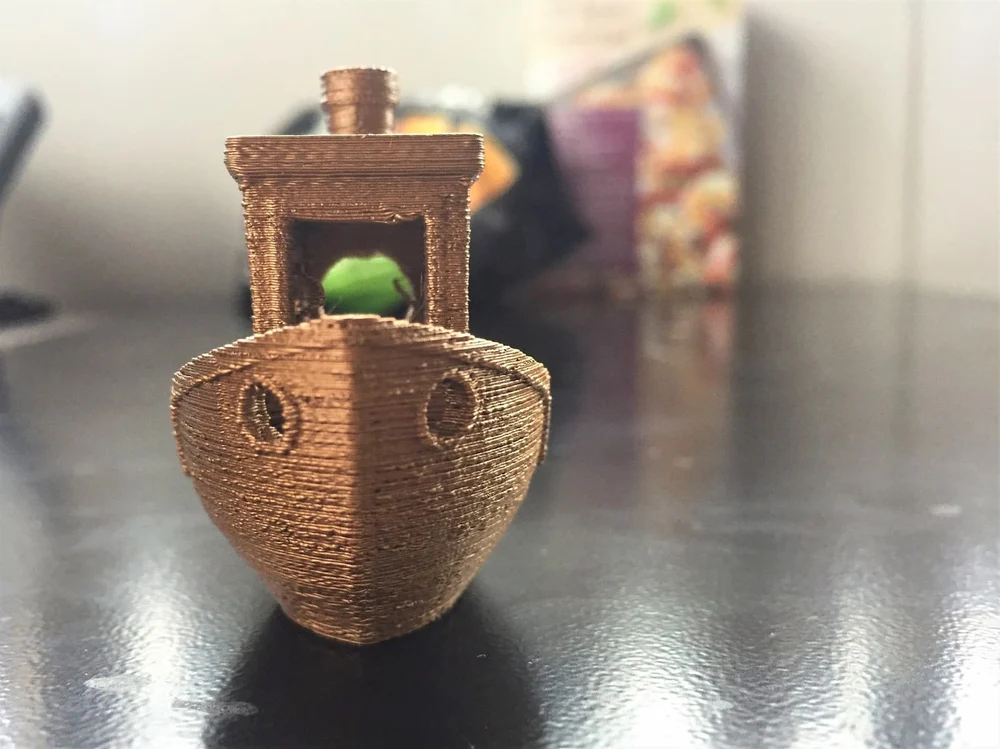
A one-stop shop for all 3D printing technology-related products, SainSmart offers 3D printers, filaments, CNC routers, laser engravers, and more. In the metal filaments category, you can find bronze-, brass-, and copper-infused PLA filaments, but we can’t say with any certainty how much metal they actually contain. There are some indirect mentions of “40%”, but many customers claim that there seems to be little to no metal present.
- Price: ~$50 for 1 kg
- Spool size: 500 g
- Nozzle temperature: 190-220 °C
- Bed temperature: 40-60 °C